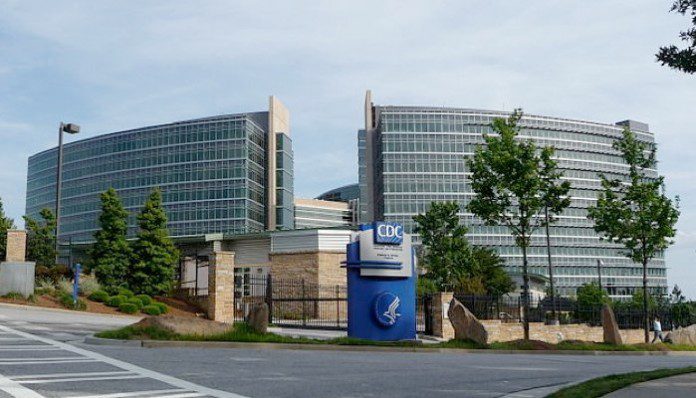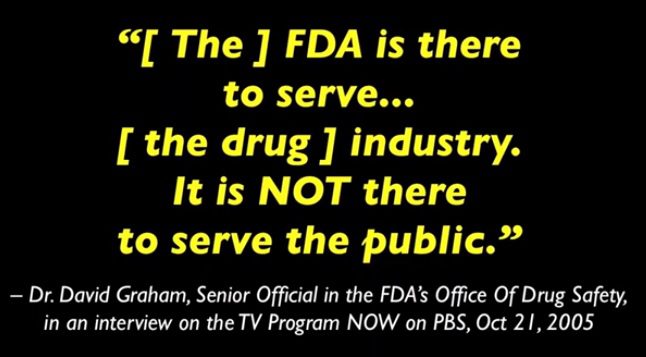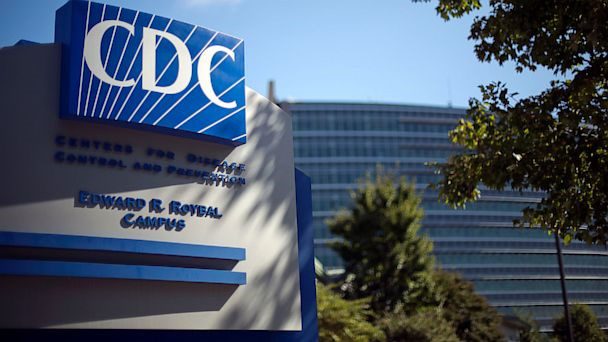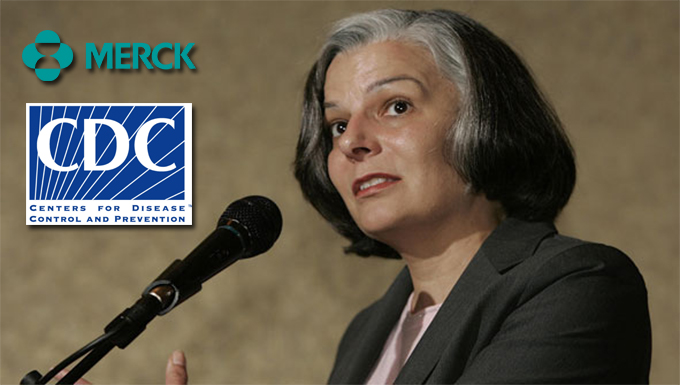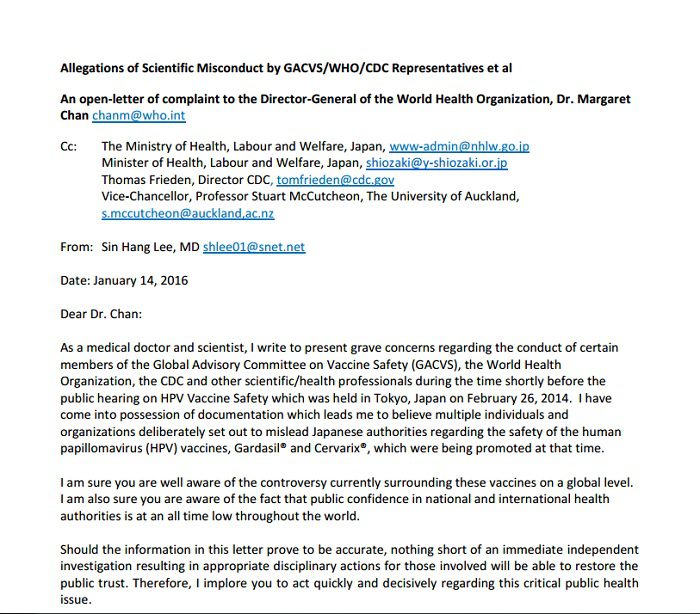A Comprehensive Review of Vaccines: Part 4 of 12
As a society, we put our trust in the regulatory agencies established to protect us, but are they fulfilling their duties or are they protecting someone else? Government bureaucracies are political by nature, but now add the fact that there are hundreds of billions of dollars at stake and you have a recipe for almost certain corruption. Remember, these are the gatekeepers for all drugs coming on to market and their rulings determine which drugs come to market and which don’t. In part 4 of this series we take a closer look at these agencies and see where their loyalties really lie.
Food and Drug Administration (FDA)
In addition to the president Obama nominating a commissioner with financial ties to a dozen or more pharmaceutical companies, the FDA has an even bigger existing conflict of interest that we do not hear much about. In 1992 congress passed the Prescription Drug User Fee Act (PDUFA) which allowed the FDA to collect fees directly from drug manufacturers to fund the new drug approval process. What this legislation did was allow the very companies the FDA is supposed to regulate, to become its funders. Those who fund an organization enjoy privilege and control and this is no exception. Are we to believe that with all the money we spend on frivolous items that we cannot even fund our own federal agency to make sure our drugs are safe?
Dr. Marcia Angell
As we saw in part one of this article, the former Executive Editor of The New England Journal of Medicine, Dr. Marcia Angell, is very familiar with the pharmaceutical and medical industry. Dr. Angell wrote an article titled “Taking back the FDA” in 2007 with her critique of this fundamental conflict of interest in this agency.
Here are some excerpts from her article:
But in 1992, Congress put the fox in the chicken coop. It passed the Prescription Drug User Fee Act, which authorizes drug companies to pay “user fees” to the FDA for each brand-name drug considered for approval. Nearly all of the money generated by these fees has been earmarked to speed up the approval process.
In effect, the user fee act put the FDA on the payroll of the industry it regulates. Last year, the fees came to about $300 million, which the companies recoup many times over by getting their drugs to market faster.
The FDA also refuses to release unfavorable research results in its possession without the sponsoring company’s permission. Here again, it contends not to have the authority to do so, but providing evidence of side-effects or negative results would seem to be an integral part of its job. It’s no wonder that serious safety concerns about drugs such as Vioxx, Paxil, and Zyprexa have emerged very late in the day — years after they were in widespread use.
The agency’s coziness with industry is underscored by the composition of its 18 advisory committees — outside experts who help evaluate drugs.
Incredibly, many of these advisors work as consultants for drug companies. Although they are supposed to recuse themselves if there is a direct conflict of interest, the FDA regularly grants exemptions from that requirement. Of the six members of the advisory committee that in 1999 recommended approving Vioxx — the arthritis drug pulled from the market in 2004 because it caused heart attacks — four had received waivers from the conflict-of-interest rule.
“The FDA now behaves as though the pharmaceutical industry is its user, not the public.”
– Dr. Marcia Angell, Former Executive Editor for The New England Journal of Medicine
Dr. David Graham
Dr. David Graham was a senior drug safety researcher at the FDA during the Vioxx scandal. He corroborates Dr. Angell’s sentiments as well. Dr. Graham researched Vioxx for several years before coming to the conclusion that the drug was unsafe and has caused over 100,000 heart attacks since its introduction. When he went to his superiors in the FDA about his concerns, he received feedback that was quite surprising. Instead of the FDA trying to remedy the problem with Merck, Vioxx’x manufacturer, they were disappointed in him, saying “why on earth did you study Vioxx and heart attacks anyway”? Dr. Graham was told, “drug manufacturers are our client, not the public.” When Dr. Graham said he is going public with the information he was met with strong resistance. Dr. Graham went public anyway.
Dr. Graham went on PBS in October of 2005 and aired his concerns. One of the other key takeaways from Dr. Graham is that he stressed that safety is not a concern for the FDA, but that their priority is to keep their clients (drug companies) happy. This is a very troubling characterization of what is supposed to be the nation’s last line of defense in regard to food and drugs.
The FDA is Not There to Serve the Public?
Dr. Angell and Dr. Graham told us that the FDA is there to serve the drug industry, which is a very profound statement and may sound extreme. Maybe it’s just a few agents who have this ideology. Unfortunately, when we look at the recent history and behavior of the FDA, it does seem to be a systemic ideology throughout the agency. What I mean by that, is that the FDA comes down extremely hard on any homeopath or natural health practice, while letting large pharmaceutical companies get away with murder — some might say literally. If you’re an organic raw milk farmer and the FDA gets you in their sights they will roll up with a dozen or more armed tactical agents and destroy or seize your product on the spot and take all your cash. Could you even imagine that ever happening to one of the big pharmaceutical companies?
Medical error is the third leading cause of death in America and pharmaceutical drugs account for a large portion of those deaths. There is a well respected paper published by Dr. Barbara Starfield from John Hopkins School of Public Health which concludes that there are over 100,000 deaths every year from pharmaceutical drugs alone. That’s almost 2,000 people a week dying from pharmaceutical drugs. It’s a matter of public record that pharmaceutical companies promoted products they knew were dangerous to the public and many lives were effected as a result. How many people are dying from raw milk? Yet, the supposedly understaffed FDA chooses to spend its precious time raiding and harassing raw milk farmers. I use raw milk farmers as an example, but this seems to be the case with any type of natural or holistic product that comes across the FDA’s radar – they pursue them with extreme prejudice. There are many examples of this and Natural News compiled a list of FDA raids and a timeline in an article titled “Timeline of FDA raids on raw milk farmers, dietary supplement makers and natural medicine practitioners.” It is plain to see that the FDA has been bought off by the drug companies to crush any competition they see as a threat to the drug makers.
This behavior is not just limited to the FDA, we have seen similar behavior from the American Medical Association, the National Cancer Institute as well as many other allopathic agencies. All one needs to do is look at Harry Hoxsey, Max and Charlotte Gerson, or Stanislaw Burzynski, to name just a few. These agencies do not appear to have the public’s best interest at heart and seem more like allopathic gatekeepers. If it is not a pharmaceutical drug or treatment and cannot be patented, one or more of these agencies will likely be called in to intervene.
The FDA and Dr. Stanislaw Burzynski MD, PhD.
Stanislaw Burzynski is a doctor in Texas who has been treating people with inoperable brain tumors naturally with great success. In fact, the first half hour of the documentary is solely about all the patients he has cured when traditional doctors gave up on them after trying every conventional method possible. The Texas Medical Board, backed by the FDA and the National Cancer Institute, spent years harassing Dr. Burzynski by continually filing complaints against him and trying to put him out of business.
The Texas Medical Board Filed against Dr. Burzynski at least a half a dozen times and they lost every time. It got so bad that many of his patients testified on his behalf to try to keep the treatment available or their children would have died. Keep in mind that Dr. Burzynski was not allowed to treat anyone who did not use AMA approved cancer treatment first and in most cases he was these patients last hope. Dr. Burzynski is by no means the only case where the FDA aggressively pursued natural healers, but this documentary captures exactly whose side the FDA is on and it’s not the people’s side. The FDA has clearly been compromised by the pharmaceutical industry. Like Dr. David Graham from the FDA told us: the FDA is there to serve the drug and medical industry.
Professor Donald Light
Donald Light is a professor at the University of Medicine and Dentistry of New Jersey School of Osteopathic Medicine and a founding fellow of the Center for Bioethics at the University of Pennsylvania. He is currently researching the historical roots of institutional corruption in the development of prescription drugs. In 2013 Professor Light wrote an article published by Harvard University’s Edmond J. Safra Center for Ethics titled “Risky Drugs: Why the FDA Cannot Be Trusted”
Here are some excerpts:
The bar for “safe” is equally low, and over the past 30 years, approved drugs have caused an epidemic of harmful side effects, even when properly prescribed. Every week, about 53,000 excess hospitalizations and about 2400 excess deaths occur in the United States among people taking properly prescribed drugs to be healthier. One in every five drugs approved ends up causing serious harm, while one in ten provide substantial benefit compared to existing, established drugs. This is the opposite of what people want or expect from the FDA.
Prescription drugs are the 4th leading cause of death. Deaths and hospitalizations from over-dosing, errors, or recreational drug use would increase this total. American patients also suffer from about 80 million mild side effects a year, such as aches and pains, digestive discomforts, sleepiness or mild dizziness.
In 2013, Journal of Law, Medicine and Ethics (JLME) published an article co-written by Light, Joel Lexchin of York University and Jonathan J. Darrow of Harvard Medical School entitled Institutional Corruption of Pharmaceuticals and the Myth of Safe and Effective Drugs. This article provides “systematic, quantitative evidence” of what’s happened since the pharmaceutical industry started making large contributions to the FDA for reviewing its drugs: the FDA has sped up the review process to such an extent that approved drugs are increasingly dangerous and result in harm, hospitalizations, and deaths. He refers to this phenomenon as an “epidemic of harms” that will increase revenues for providers at the expense of increased insurer costs and pubic harm.
Light and his colleagues show us why we cannot trust the FDA to protect the public. The FDA was developed to address public demand for action in the face of drug disasters, but this agency has nurtured a close relationship with pharmaceutical companies that has only “contributed to vague, minimal criteria of what ‘safe’ and ‘effective’ mean”. Light explains that the FDA approves many ‘new’ drugs each year that are only minor variations of existing drugs, with very little evidence of their safety. He explains that once a new drug is approved, then “a very effective mass marketing takes over, and the FDA devotes only a small percent of its budget to protect physicians or patients from receiving biased or untruthful information. The further corruption of medical knowledge through company-funded teams that craft the published literature to overstate benefits and understate harms, unmonitored by the FDA, leaves good physicians with corrupted knowledge. Patients are the innocent victims.”
Although it now embraces the industry rhetoric about “breakthrough” and “life-saving” innovation, the FDA in effect serves as the re-generator of patent-protected high prices for minor drugs in each disease group, as their therapeutic equivalents lose patent protection. The billions spent on promoting them results in the Inverse Benefit Law: the more widely most drugs are marketed, the more diluted become their benefits and the more widespread are their risks of harm.
Professor Light describes ‘the selling of sickness’, a term coined to describe the process by which the industry works to expand criteria for prescribing a drug as their profits begin to diminish and patent protection runs out. “Regulations conveniently prohibit the FDA from comparing the effectiveness of new drugs or from assessing their cost-effectiveness. Only the United States allows companies to charge what they like and raise prices annually on last year’s drugs, without regard to their added value.
Centers for Disease Control (CDC)
The CDC is an organization that has been mired in controversy and unethical practices throughout it’s history, which dates back to its inception and it’s handling of the Tuskegee experiments. In 1976 the CDC’s handling of the swine flu pandemic that never happened was equally troubling. Not only did the CDC overreact on very suspicious evidence by vaccinating almost 50 million people. It turned out that the vaccine that was used had very little testing done on it and the CDC knew that it was causing some people neurological disorders with side effects such as Guillain Bar Syndrome.
In this 60 minutes video from the late 1970’s, Mike Wallace discusses what happened at the CDC during the swine flu epidemic of 1976.
In the last decade their behavior has become particularly appalling. Much of the controversy is centered around Merck’s Measles, Mumps, and Rubella (MMR) triple shot vaccine. There is much more disturbing information about the CDC in part 9 of this article titled “The Conclusive Links Between Vaccines and Autism”.
Dr. Julie Gerberding
Dr. Julie Gerberding was in charge of the CDC from 2002 until 2009. Dr. Gerberding was the head of the CDC when research was destroyed which found a link between the MMR vaccine and autism. It’s hard to imagine that she has no knowledge or culpability. Was Dr. Gerberding the one who told the authors of the MMR study to destroy the data linking autism to the MMR vaccine? Did she help the two Merck scientists (who are now suing Merck) hide data from a different study about that same vaccine?
Upon resigning her position with the CDC, she waited the required year before going to work for the industry she previously regulated. She is now the President of Merck’s Vaccine division. Merck is the leading manufacturer of CDC-recommended childhood vaccines, making 14 of the 17 currently on the list, as well as a great many CDC-recommended adult vaccines.
A quick review of the CDC budget reveals that “Vaccines for Children” is the largest category within the budget, and it increased from $3.5 billion in 2014 to $4 billion in 2015, an increase of $514 million. This adds up to quite a nice profit for Merck and the pharmaceutical industry as a whole, at the enforceable ‘recommendation’ of the CDC and on the backs of the American public.
In addition to her questionable ethics while in charge at the CDC, Dr. Gerberding had years to fill the CDC with her own loyalists, making her position at Merck that more valuable. Maybe that’s why she was able to hold over $4 million worth of stock in Merck. Gerberding had seven years to stack the CDC with personnel who could be used to grease the skids for her next employer’s drug approval process.
There is more history between Merck and the CDC under Gerberding’s reign. In 2014, three different whistleblowers came out and said Merck was hiding unfavorable data in regard to Merck’s MMR vaccine. Two of these whistleblowers were Merck scientists and the third was a senior epidemiologist employed by the CDC.
We should keep in mind that this is after Merck paid almost $1 billion in fines for holding back crucial information related to the bad drug, Vioxx, which is estimated to have led to the deaths of hundreds of thousands of people. In the end, Merck will tie this up in court for so long that any public outrage will have migrated to a newer corporate transgression. Outside the spotlight, they will pay a fine and it will be business as usual. These companies view these fines as the cost of doing business.
Dr. William Thompson, CDC Whistleblower
We are told over and over that there is no link between vaccines and autism and yet, we have a senior epidemiologist from CDC who tells us that in fact, some of his research showed a 340% increase in autism and that he was directed to cover up these findings. In 2014, Dr. Thompson admitted that he had helped CDC destroy data from a study which linked the MMR vaccine to an over 300% increase in autism among African American boys. In a subsequent statement, CDC admitted to withholding the data from Dr. Thompson’s study. What else are we not being told?
A quote from Dr. Thompson:
“It’s all there. This is the lowest point in my career, that I went along with that paper. I have great shame now when I meet families of kids with autism, because I have been part of the problem.”
In July, 2015, investigative journalist Sharyl Attkisson wrote an article entitled CDC Scientist: ‘We scheduled meeting to destroy vaccine-autism study documents’, in which she quotes Dr. Thompson when he described how the data that linked the MMR vaccine with autism was trashed. She also shares Representative Bill Posey’s statement to congress about Dr. Thompson and the MMR study data that Merck tried to hide. On July 29, 2015, Representative Posey implored congress (1:02:24) to take a closer look at the data: “Considering the nature of the whistleblower’s documents as well as the involvement of the CDC, a hearing and a thorough investigation is warranted. So I ask, Mr. Speaker, I beg, I implore my colleagues on the appropriations committees to please, please take such action.” Attkisson remarks on the likely outcome of his plea:“In an untainted news environment, the allegations would make headlines in most legitimate publications and would trigger federal inquiries. However, the interests of the powerful pharmaceutical industry reach deeply into Congress and the news media through lobbyists, propaganda and advertising dollars.”
In 2014, Lawrence Solomon wrote an article for Huffington Post entitled Merck Has some Explaining To Do Over its MMR Vaccine Claims.
Here are some excerpts which addresses the cases pending against Merck regarding the MMR vaccine:
“Merck, the pharmaceutical giant, is facing a slew of controversies over its Measles-Mumps-Rubella (MMR) vaccine following numerous allegations of wrongdoing from different parties in the medical field, including two former Merck scientists-turned-whistleblowers. A third whistleblower, this one a scientist at the Centers for Disease Control, also promises to bring Merck grief following his confession of misconduct involving the same MMR vaccine.”
“The controversies will find Merck defending itself and its vaccine in at least two federal court cases after a U.S. District judge earlier this month threw out Merck’s attempts at dismissal.”
Here are a few of the charges pending against Merck, outlined in just one of these three lawsuits:
- Using improper testing techniques
- Manipulating testing methodology
- Abandoning undesirable test results
- Falsifying test data
- Falsely certifying compliance with CDC contract terms
- Engaging in fraud and concealment.
More CDC Vaccine Cover-Ups
We have recently discovered that CDC was involved in yet another cover-up but this time involving the World Health Organization (WHO), in what’s being called a globally coordinated effort to cover up research fraud with the HPV vaccination. This story is still developing but there is more disturbing information illustrated in the recently published article titled, “It’s Official: Global Coordinated HPV Research Fraud Involving CDC, WHO, GAVCS & Others.” See more about this in the next section on the WHO.
World Health Organization (WHO)
The World Health Organization (WHO) is a United Nations agency whose mission you can review for yourself. The first objective of the WHO mission statement is ” To act as the directing and coordinating authority on international health work” and WHO employs more than 7,000 people, with offices in 150 countries.
In 2009, WHO declared the H1N1 strain of Swine Flu to be a pandemic. It never amounted to much of a public threat, but the WHO declaration paid off handsomely for the pharmaceutical companies. WHO made the decision to raise the pandemic flag based on the advice of individuals with strong financial ties to drug makers who eventually profited from their decision. Dr. Wolfgang Wodarg, chair of the Health Committee in The European Council, German parliamentarian and epidemiologist, explains on his blog : ““The governments have sealed contracts with vaccine producers where they secure orders in advance and take upon themselves almost all the responsibility. In this way the producers of vaccines are sure of enormous gains without having any financial risks. So they just wait until WHO says ‘pandemic’ and activate the contracts.” Time Magazine explained the actual fallout from the H1N1 virus: “….catastrophe never came, and the total U.S. death toll from H1N1 — about 13,000 people over the past year — was considerably smaller than the 36,000 people who are estimated to die each year from the regular, seasonal flu. Millions of doses of H1N1 vaccine expired unused on doctors’ shelves, and health officials are now under fire for overhyping what eventually seemed like a harmless bug.”
What it all boils down to, according to this Government Accountability Office report, is that by December, 2010, the US alone had spent over $4 billion in response to the supposed pandemic. You can imagine what governments around the world spent. You can read more about Dr. Wodarg and European leaders’ concerns in the the article: “Council of Europe Parliamentary Assembly to Investigate WHO and “Pandemic” Scandal“. The US press took a rather low key approach to the topic, as is typically the case for stories that might be unflattering to drug company advertisers. The Washington Post ran this article covering the European concerns and the WHO response.
In this video, Dr. Wodarg discusses his concerns about WHO conflicts of interest in relation to the H1N1 pandemic scare.
In 2010, the BBC published “WHO swine flu experts ‘linked’ with drug companies“, which discusses a BMJ article on the same topic. It concludes: “Key scientists behind World Health Organization advice on stockpiling of pandemic flu drugs had financial ties with companies which stood to profit, an investigation has found.”
You can read this article, which highlights just one such case, wherein a WHO board member is a ‘large shareholder’ in a company that makes vaccines. This site also contains some WHO documents that look a lot like advertisements for booming growth in the global vaccine market.
Dr. Sin Hang Lee’s Open Letter
In a recent article titled “Newly Leaked Emails Prove WHO Suppressing HPV Vaccine’s Harmful Effects”, it seems as if WHO is taking a page out of the CDC playbook. Dr. Sin Hang Lee, MD, former Associate Professor at Yale University and the current Director of the Milford Molecular Diagnostic Laboratory in Milford, Connecticut, filed an open letter of complaint to the Director General of the World Health Organization. His letter states that there has been a coordinated effort to cover-up the dangerous side effects of the HPV vaccine and he has the internal emails to prove it. There is another article titled, “It’s Official: Global, Coordinated HPV Research Fraud Involving CDC, WHO, GACVS & Others” which goes into more detail about the cover-up.
Here is part of Dr. Lee’s letter:
To view Dr, Lee’s whole letter click here.
As you can see, even the World Health Organization is not above the fray when it comes to ethics breaches, conflicts of interest and, knowingly or unknowingly, further lining the pockets of drug company shareholders.
Summary
As we see from the evidence above, the regulatory agencies that we entrusted to keep unsafe drugs off the market and make legitimate recommendations about public health have been compromised just like the medical journals. It is really no surprise that these agencies would be a target for corruption. After all, they are the agencies that pharmaceutical companies need to get their products on the market. They are also the agencies that can declare epidemics or outbreaks, which significantly increase vaccine uptake. In many cases the beneficiaries of such declarations and the resulting uptick in vaccine sales are those who sit on the boards of these organizations.
We have several highly credible industry insiders telling us that these agencies are not there to serve the public’s interest and their full allegiance is to drug makers. These agencies have corroborated Dr. Angell’s and Dr. Graham’s assertions with their actions. We have proof that these agencies have covered up crucial safety information about vaccines. It would not be difficult to imagine that maybe the reason the CDC recommended vaccine schedule has increased so much in the last 20 years is because of the incestuous relationship between the CDC and drug makers. So when parents learn about these relationships and the behavior of these agencies, can you fault them for their lack of trust or for being skeptical about the information coming out of them? I think not.
This is Part 4 in the 12 part series: A Comprehensive Review of Vaccines
Part 1: Why Are So many People Choosing Not To Vaccinate?
Part 2: A Closer Look at Pharmaceutical Companies
Part 3: Vaccine Policymakers and Conflicts of Interest
Part 4: How The CDC, FDA and WHO Lost the Trust of Vaccine Skeptics
Part 5: Are Vaccines Safe & Effective?
Part 6: What Are The Real Risks of Not Vaccinating in the U.S.?
Part 7: Herd Immunity, Shedding and the Questionable Science Behind Vaccines
Part 8: Did Vaccines Really Eradicate Infectious Diseases in the 20th Century?
Part 9: The Conclusive Evidence Linking Vaccines and Autism
Part 10: Why Don’t We Hear The Whole Story About Vaccines?
Part 11: What Are Independent Experts Telling Us About Vaccines?
Part 12: Vaccines: The Greater Good or Greater Greed? – Conclusion
Speed the Shift is an independent group of researchers on a mission to find the truth about controversial topics. We utilize alternative information sources that are often ignored or outright censored by the corporate media in an effort to gain a broader awareness of relevant issues.







